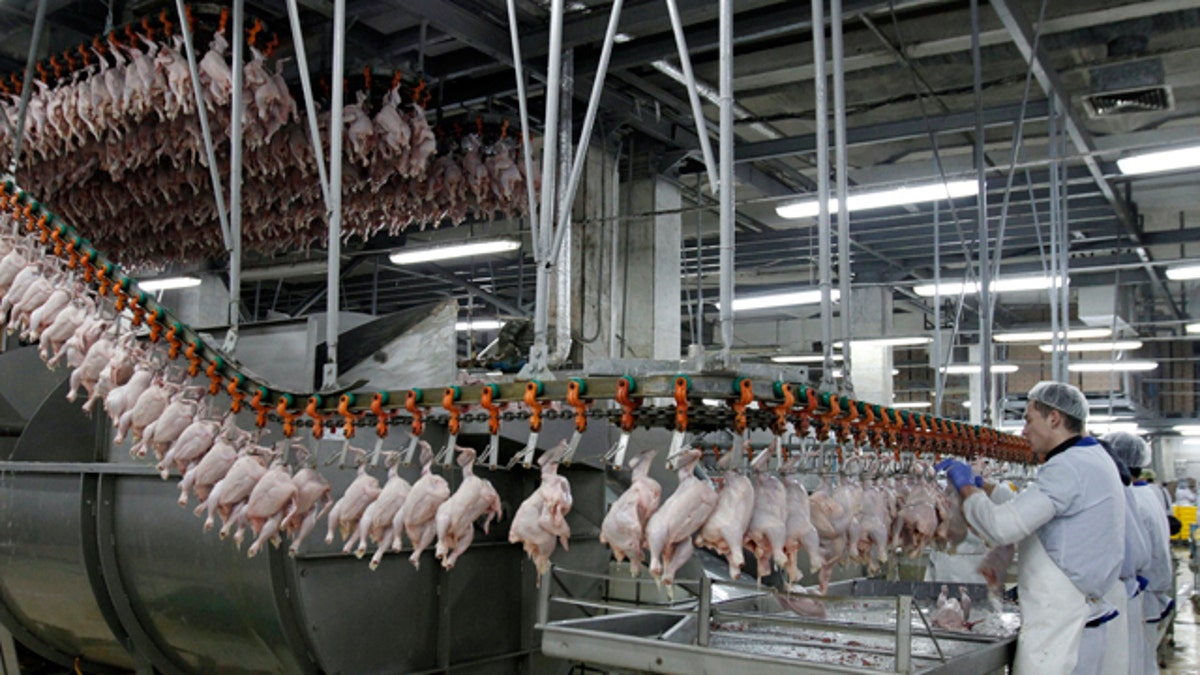
(Reuters)
A new report describes two cases of poultry workers who developed chronically swollen knuckles, the hallmark sign of a rare skin condition known as pachydermodactyly.
Researchers from Wake Forest School of Medicine in Winston-Salem, North Carolina, said the joint swelling as well as pain, itching and burning both men felt in their hands was likely due to repeated injuries to the skin and tissue changes as a result.
"Although there are not many cases reported, and pachydermodactyly is rare, I believe other poultry workers may have this condition despite the use of protective measures, such as, gloves," dermatologist Dr. Rita Pichardo-Geisinger, one of the study's authors, told Reuters Health in an email.
The cases, she said, were found as part of a larger study on skin disease in more than 500 Latino immigrant poultry workers in western North Carolina.
The two patients, both men, worked as a chicken catcher and chicken hanger. Chicken catchers help transport the animals from large houses to processing plants by scooping up five to seven chickens at once in each hand and putting them into cages, the researchers wrote in the Archives of Dermatology.
Chicken hangers are responsible for grabbing the birds and putting them into metal shackles on a conveyer belt. Both jobs move quickly -- hangers are supposed to hang a chicken every two seconds, according to the authors -- and workers go through the same motions for hours at a time.
Both men with pachydermodactyly said the swelling in their fingers interfered with their job as well as life outside of work. Along with pain and itching in the hands, they also both reported wrist and shoulder pain.
And in both instances, most symptoms improved when the poultry workers took a few days off from work -- but the swelling itself didn't go away, according to the case studies.
Pichardo-Geisinger said pachydermodactyly is often not painful, though these cases were an exception. The condition is rare but most commonly occurs in younger men, she said, including those who typically have regular skin trauma as part of their jobs or people with obsessive-compulsive disorder with a habit of frequently rubbing their hands together.
HOW COMMON IS IT?
The current study cannot give an exact estimate of how common pachydermodactyly and related symptoms may be in chicken catchers and hangers.
"It is important to note that the occurrence of pachydermodactyly in only two individuals out of the entire poultry workforce indicates the condition is rare," said a spokesperson for the National Chicken Council, a trade association.
"It is also important to not draw conclusions on such a small sample size especially since the cause of pachydermodactyly is unknown. Without additional medical knowledge of the workers and their individual working conditions, drawing conclusions about the cause of this particular dermatological condition is unfounded."
A spokesperson for the U.S. Poultry & Egg Association added that, "The poultry industry constantly strives to improve the safety of our work environment for our employees."
Both representatives pointed out in emails to Reuters Health that injury and illness rates decreased by 73 percent in poultry processing facilities from 1994 through 2010, according to data from the Bureau of Labor Statistics.
Wearing gloves and rotating jobs may help prevent pachydermodactyly in particular and ease symptoms for people who have already developed it, according to Pichardo-Geisinger.
"But the swelling due to compensatory tissue changes may persist," she added. "The long-term prognosis is deformity of the hands and inability to perform (the) patient's job and daily activities."
